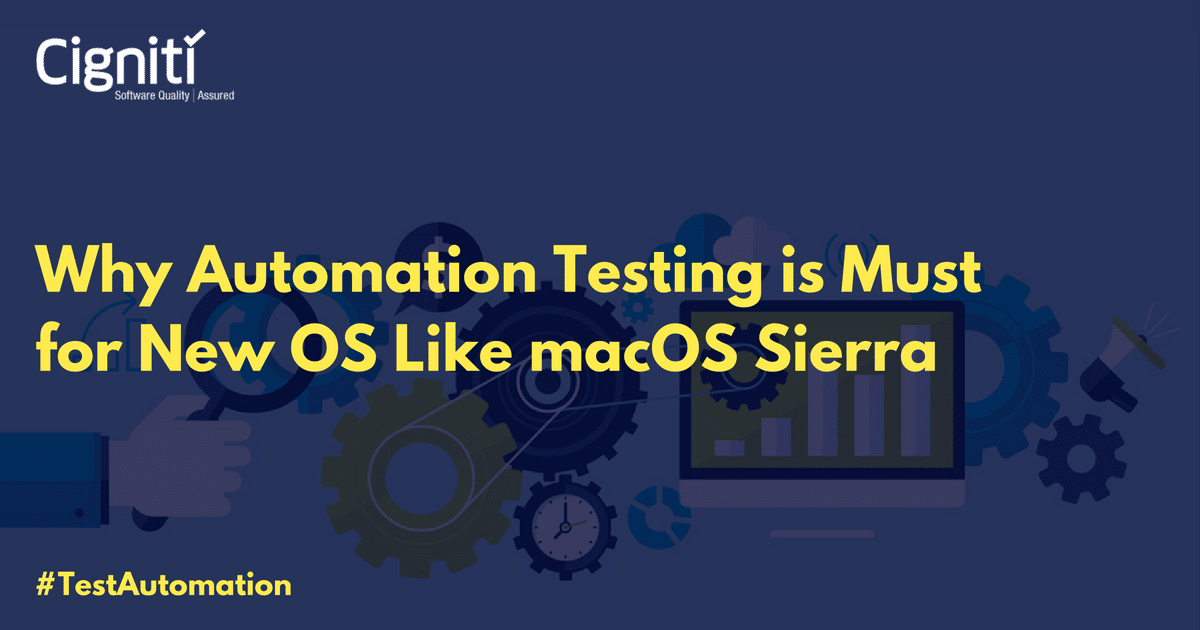Accelerate Your Application Delivery with Automated Testing
|
Listen on the go!
|
In the modern landscape of software development, businesses are now required to increase the speed of delivery in order to cope with the stiff demands of a very competitive marketplace. But even with this focus on speedy delivery, it is much more important to not compromise on quality.
Companies are rapidly adapting agile testing practices for the purpose of accelerating app delivery to market, because following a consistent, continuous schedule encourages more frequent releases and also reduces the time between ideation and completion. A paradigm change is then needed to ensure Quality@Speed.
Switching Over From Manual To Automated Testing
Manual methods are now outdated, given the enormous pressure on companies to constantly innovate, develop, and deliver, or else risk being left out in the cold. For regression testing, a huge amount of effort is required from a large number of testers, so in order to keep costs down and speed things one should seriously consider the automation route. Close collaboration between test and dev teams can take care of many superfluous testing processes and automate them to keep the delivery pipeline clear.
Test automation implemented well should ideally guarantee that the right tests are executed at the right junctions; this will ensure that not only does the software function at a technical level, but that it also fulfills the desires of the end consumer.
Implementing and Executing Automation
The ultimate objective of putting an automation program in place is to clear up the backlog of testing projects by automating recurring tasks. Test and dev teams would then both have a far clearer picture of app behavior. Therefore unspent resources can be used elsewhere.
But now, because there are many different testing tools (security, performance, functional, etc), different teams need to use different tools according to their needs. The multiplicity of tools, however, means that the test results will not be too well integrated. To handle this potential issue, all the automation must be integrated and united under a specific solution that accurately presents the relevant results.
After analyzing the data you are then in a position to decide whether the app is ready for release or not. And even though this final decision can also be automated, it is important to evaluate the data from the insights generated by the testing tools and be confident about giving that ultimate approval for the completion and delivery of the app.
Metrics
Metrics are crucial to test the health of the test itself. Apart from the quality of any app undergoing testing, the test automation framework needs to be analyzed for inconsistencies, glitches, and loopholes that might prove to be destructive down the line. These insights can inform you about what might need to be changed in the overall automation process. Instituting metrics is therefore crucial to maintaining the robustness of your delivery flow.
Conclusion
Manual methods should really be done away with in today’s dynamic arena, but the importance of taking some time to analyze the data from testing tools and metrics cannot be overstated. Automating your entire testing environment does not guarantee quality, but it makes it much easier to deliver apps and updates for those apps on a consistent basis.
Before giving the green light, it’s crucial to aggregate and evaluate the results of your testing programs, to get a sense of the quality of your product.
And, finally, one should never take the health and efficacy of any automation setup for granted. Putting the right metrics in place can prevent great headaches at a later stage, and can provide invaluable insights about the condition of your testing suite.
For queries about accelerating application delivery and how Cigniti can help with your testing, please get in touch with us today at contact@cigniti.com





Leave a Reply